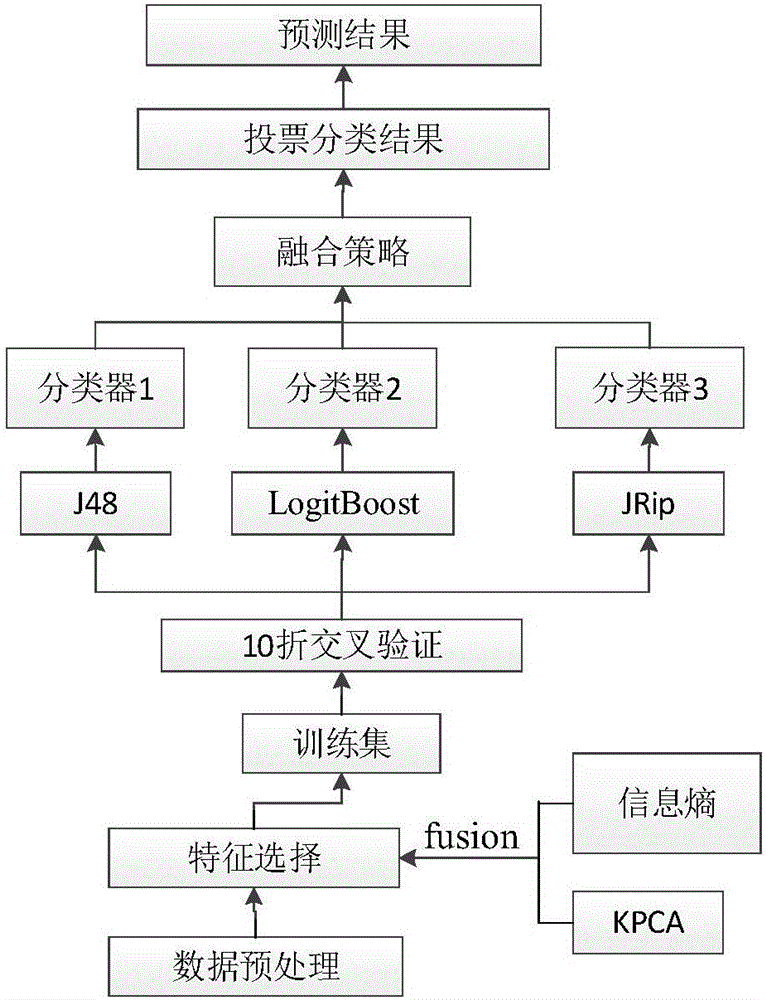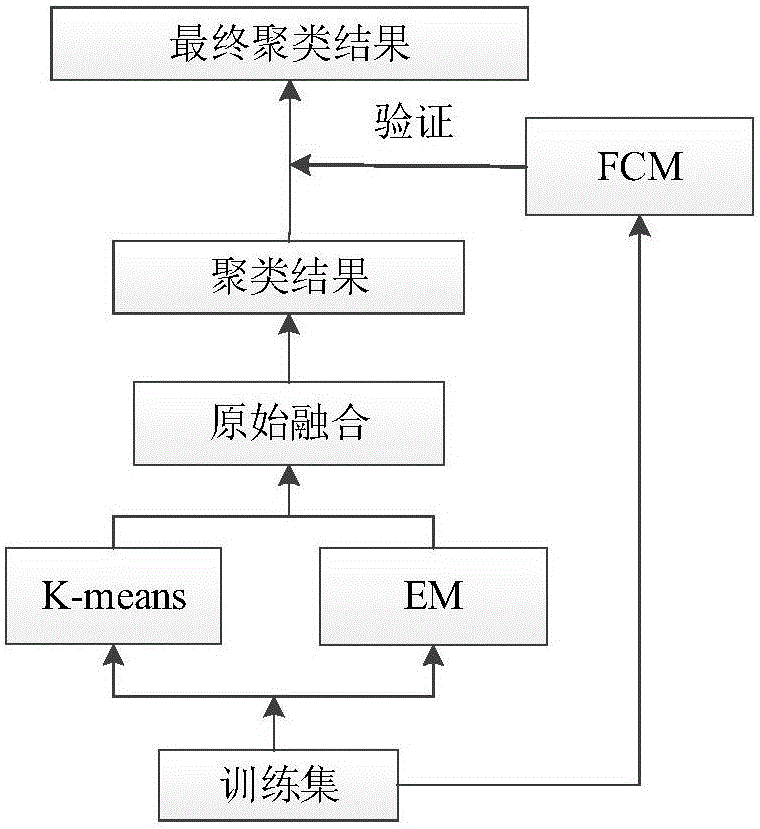Energy efficiency evaluation method based on multi-model fusion strategy
An energy efficiency and evaluation method technology, applied in the direction of resource, character and pattern recognition, prediction, etc., can solve the problems of inaccurate model evaluation results and difficult selection of energy efficiency calculation features, so as to achieve good practical engineering application value and good classification. The effect of prediction and cluster analysis effect
- Summary
- Abstract
- Description
- Claims
- Application Information
AI Technical Summary
Problems solved by technology
Method used
Image
Examples
specific Embodiment approach 1
[0017] Specific implementation manner 1: The specific steps of an energy efficiency evaluation method based on a multi-model fusion strategy are:
[0018] Step 1: Normalize the data to obtain a normalized training set;
[0019] Step 2: Perform feature selection on the normalized training set obtained in Step 1;
[0020] Step 3: Establish a multi-classifier fusion evaluation model according to Step 1 and Step 2, and obtain the classification result of energy efficiency evaluation;
[0021] Step 4: Perform cluster analysis on the classification results obtained in Step 3 to obtain the final clustering results.
specific Embodiment approach 2
[0022] Specific embodiment two: this embodiment is different from specific embodiment one in that: the data in step one specifically includes: primary energy production, total energy consumption, energy consumption elasticity coefficient, GDP, energy industry investment amount, unit GDP energy consumption, capital stock, and sulfur dioxide emission coefficient.
[0023] Other steps and parameters are the same as in the first embodiment.
specific Embodiment approach 3
[0024] Specific embodiment three: This embodiment is different from specific embodiment one or two in that: in the step one, the data is normalized, and the specific process of obtaining the normalized training set is:
[0025] Collect panel data from many provinces, municipalities and autonomous regions across the country, and carry out standardized preprocessing of the data. The standardization of the data is to scale the data proportionally, remove the unit limit of the data, and convert it into a dimensionless pure value, which is convenient for comparison and weighting. 0-1 standardization (also called normalization) is the most typical method of data standardization, which makes the result fall into the interval [0,1] through linear transformation of the original data. Considering that the characteristic values in the data set used in the present invention are all positive values, a simplified conversion function is used to normalize each component. If there are N sample...
PUM
 Login to View More
Login to View More Abstract
Description
Claims
Application Information
 Login to View More
Login to View More - R&D
- Intellectual Property
- Life Sciences
- Materials
- Tech Scout
- Unparalleled Data Quality
- Higher Quality Content
- 60% Fewer Hallucinations
Browse by: Latest US Patents, China's latest patents, Technical Efficacy Thesaurus, Application Domain, Technology Topic, Popular Technical Reports.
© 2025 PatSnap. All rights reserved.Legal|Privacy policy|Modern Slavery Act Transparency Statement|Sitemap|About US| Contact US: help@patsnap.com



